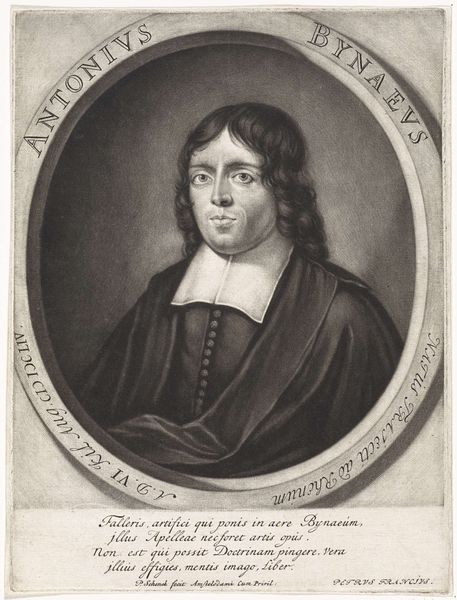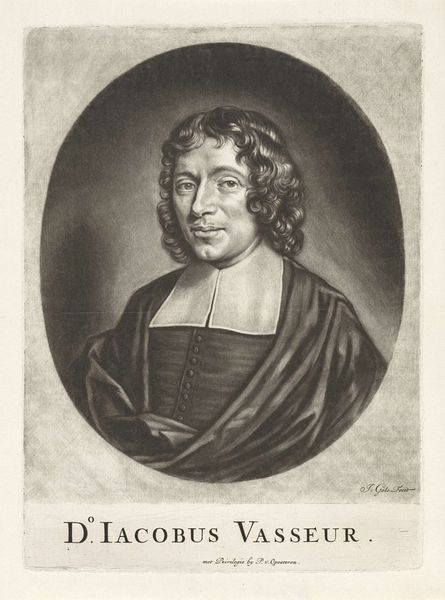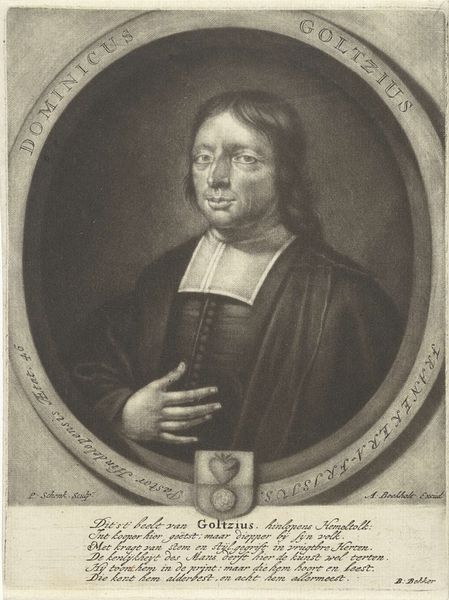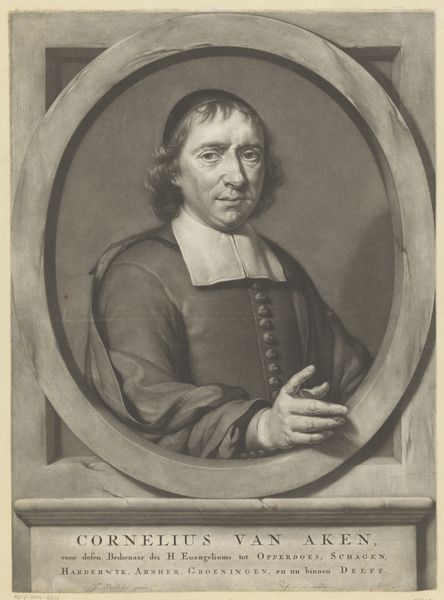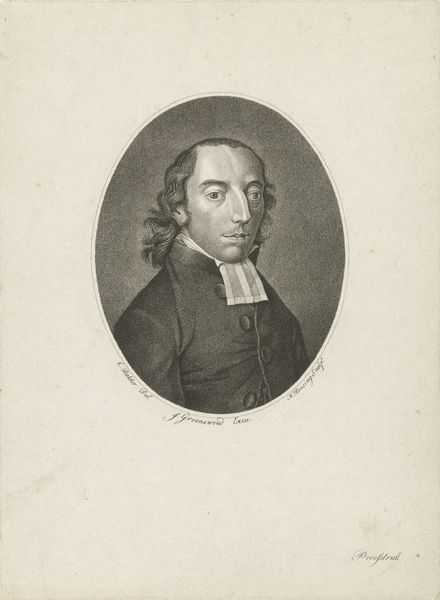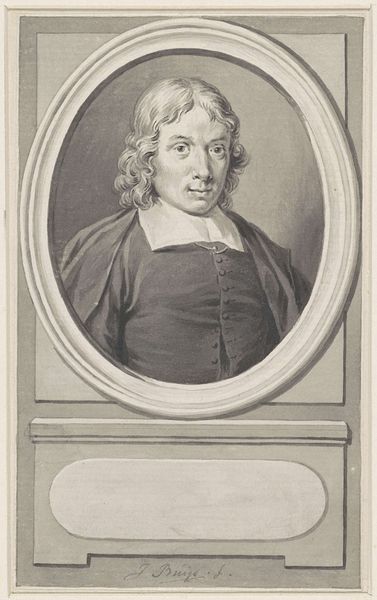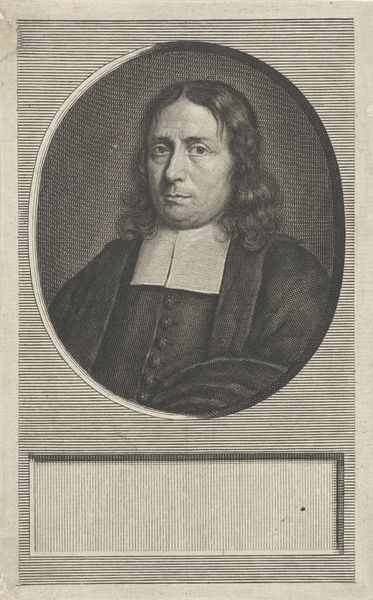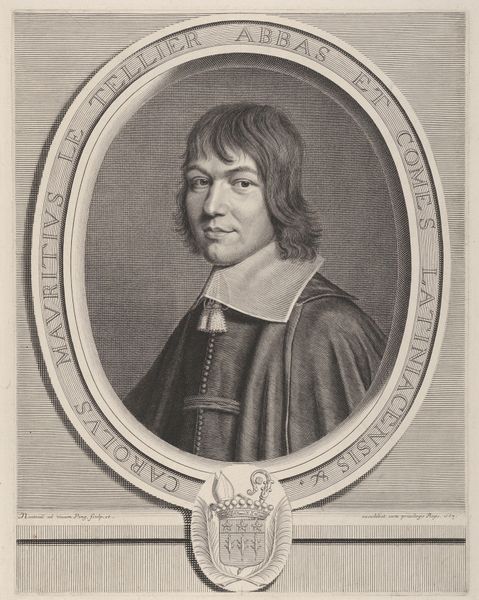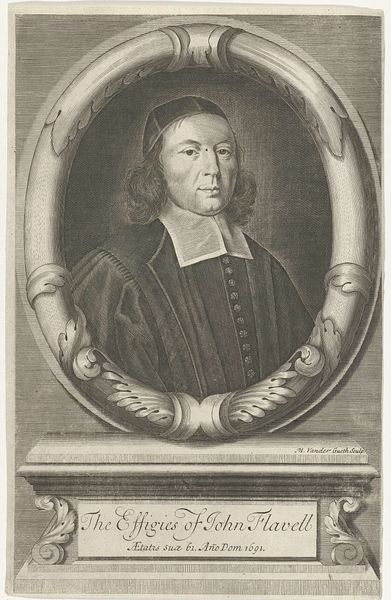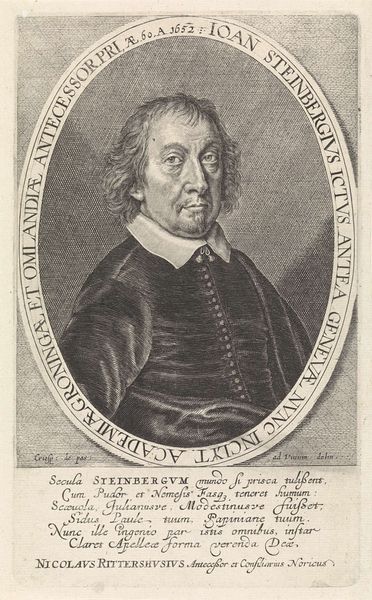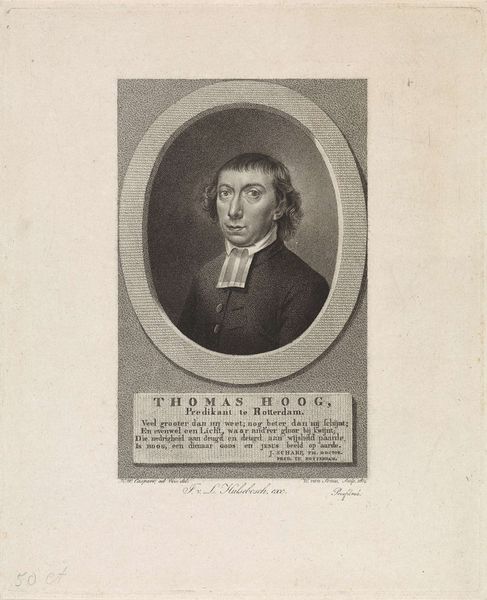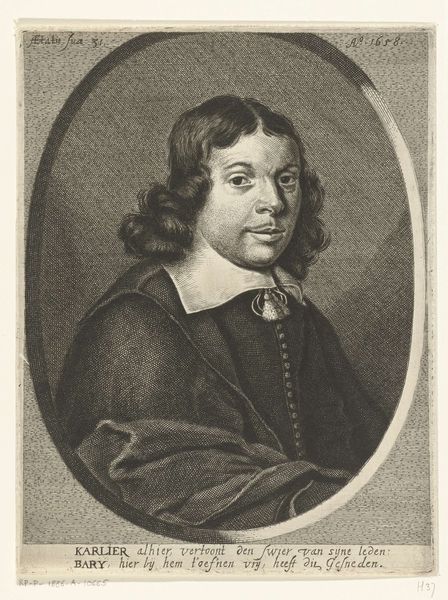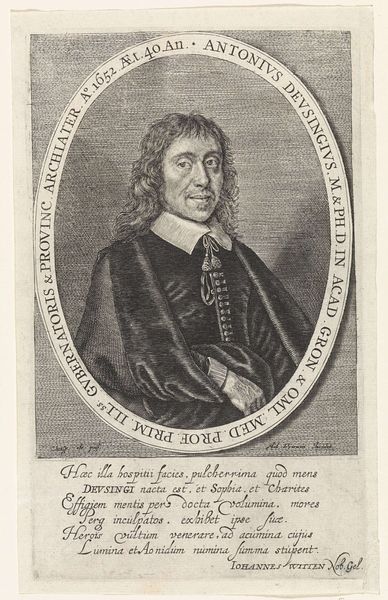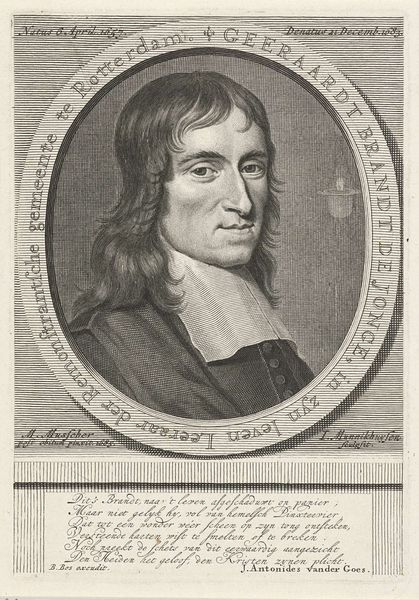
Dimensions: height 344 mm, width 215 mm
Copyright: Rijks Museum: Open Domain
Editor: This is a print from 1792 titled "Portret van Carel Philip Sander," and the profile is Jeremias Snoek. I’m immediately struck by how…ordinary Sander looks, framed so formally within this oval. He almost appears to be offering a small object in his hand. What stands out to you when you look at this piece? Curator: What immediately captures my attention is how this portrait actively participates in the construction of Sander's public identity. Here was a Lutheran minister; the engraving format allows for a relatively inexpensive reproduction and distribution, facilitating Sander’s representation across his community. Consider also, that the text inscribed at the bottom functions like a mini-biography. Why might such an emphasis have been placed on making Sander knowable to a wider public? Editor: It seems like this print would have served as a kind of public announcement, or maybe even propaganda? Highlighting Sander’s accomplishments and making him relatable. The print's ability to disseminate his image surely gave him a degree of social power? Curator: Exactly. And in the late 18th century, portraiture played a crucial role in defining social status and individual achievement. Reflect on the Baroque style. Does the "Dutch Golden Age" seem like the correct timeframe? The engraving uses existing aesthetics to lend Sander authority. This speaks volumes about the values of the society that commissioned and consumed images like these. Editor: So, it’s less about capturing Sander's "true" likeness and more about projecting an image deemed appropriate and authoritative for his role? It's interesting how art serves institutional power. Curator: Precisely. Understanding art in its historical and social context allows us to see it as more than just an aesthetic object, it becomes a window into the past’s power dynamics. Editor: That's fascinating; I'll never look at a portrait the same way again! Thank you.
Comments
No comments
Be the first to comment and join the conversation on the ultimate creative platform.
